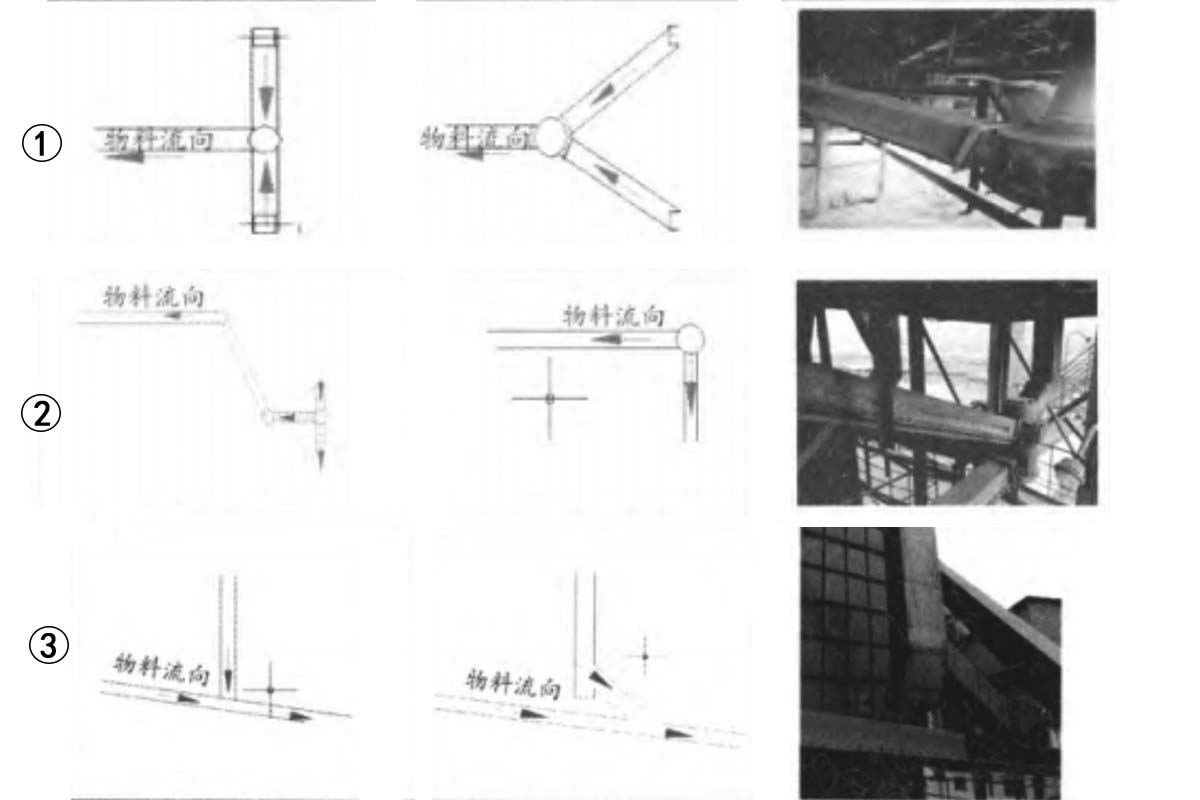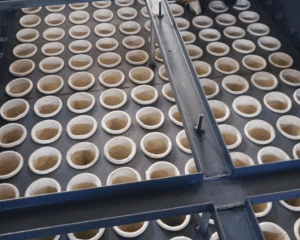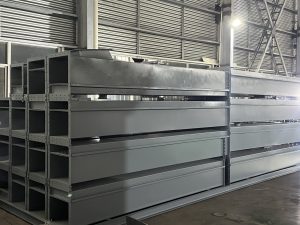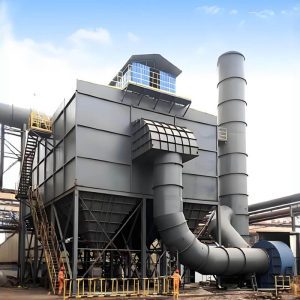ما هو الناقل الهوائي المنزلق؟
أن air slide is a low-energy, maintenance-free system designed to transport powdered or granular materials (like cement, fly ash, or food ingredients) using controlled airflow. Unlike mechanical conveyors, it has no moving parts, relying instead on air fluidization to move materials smoothly along an inclined chute.
Key Industries Using Air Slides:
✔ Cement & construction
✔ Chemical processing
✔ Food & pharmaceuticals
✔ Power plants (fly ash handling)
How Does an Air Slide Work?
إن pneumatic conveyor operates through a simple yet effective process:
Airflow Generation: A blower pushes air through a porous media (typically a fabric or ceramic plate).
Material Fluidization: The air lifts and loosens particles, reducing friction.
Gravity-Driven Flow: Materials slide downhill along the tilted chute (usually at 4°–12°).
Advantages Over Mechanical Conveyors:
→ 90% less energy than screw/belt conveyors
→ Zero wear (no chains, bearings, or motors to replace)
→ Dust-free & silent operation
Common Air Slide Problems & Solutions
1. Blockages Due to Poor Design
السبب: Low slope angle (<6°), sharp bends, or vertical feed drops.
Fix:
Increase slope to 8°–12° (e.g., a cement plant resolved blockages by adjusting from 6° to 8°).
Replace T-junctions with Y-junctions to reduce material impact.
2. Energy Waste from Oversized Fans
Myth: "More airflow = better performance."
Reality: Excess airflow wastes power and causes dust leaks.
Case Study: A plant saved ¥130,000/year by:
Replacing 7.5 kW fans with 4 kW fans.
Reducing airflow to 1.4 m³/(m²·min⁻¹) (vs. industry standard 1.5–3).

Air Slide vs. Alternatives
| Feature | ناقل هوائي منزلق هوائي | Screw Conveyor | الحزام الناقل |
|---|---|---|---|
| Maintenance | None | High (bearings, seals) | Moderate (belt wear) |
| Energy Use | Lowest | High | Medium |
| Dust Control | Excellent | Poor | Moderate |
Tips for Optimal Pneumatic Chute Performance
Right Slope: 8°–12° for most materials (test if blockages occur).
Airflow Calibration: Start at 1.5 m³/(m²·min⁻¹) and adjust downward.
Avoid Vertical Drops: Use 45° inclines for feed points.
Need an Air Slide Expert?
Whether you’re selecting, troubleshooting, or optimizing an air slide, our team can help. داركو, as a professional air slide manufacturer, is ready to provide technical consultation and solutions. Contact us for expert support!





